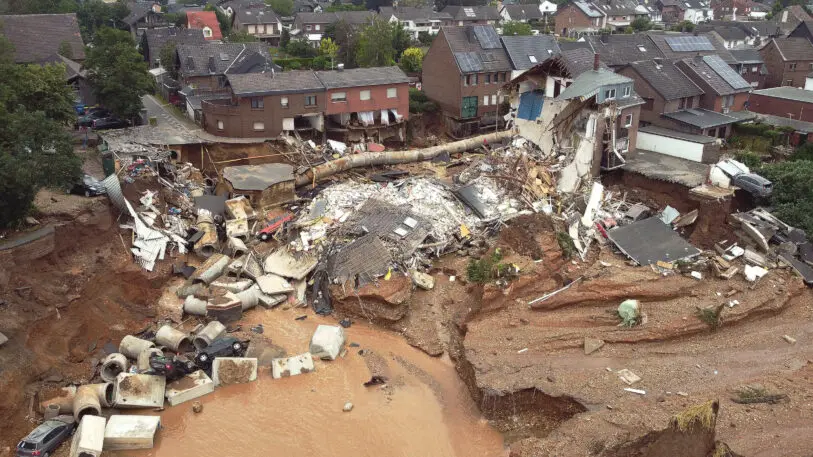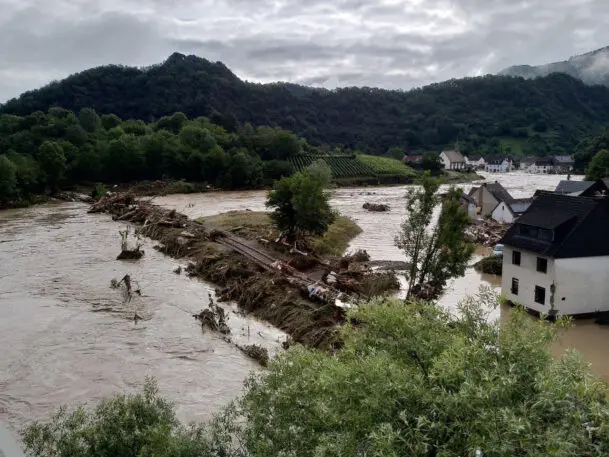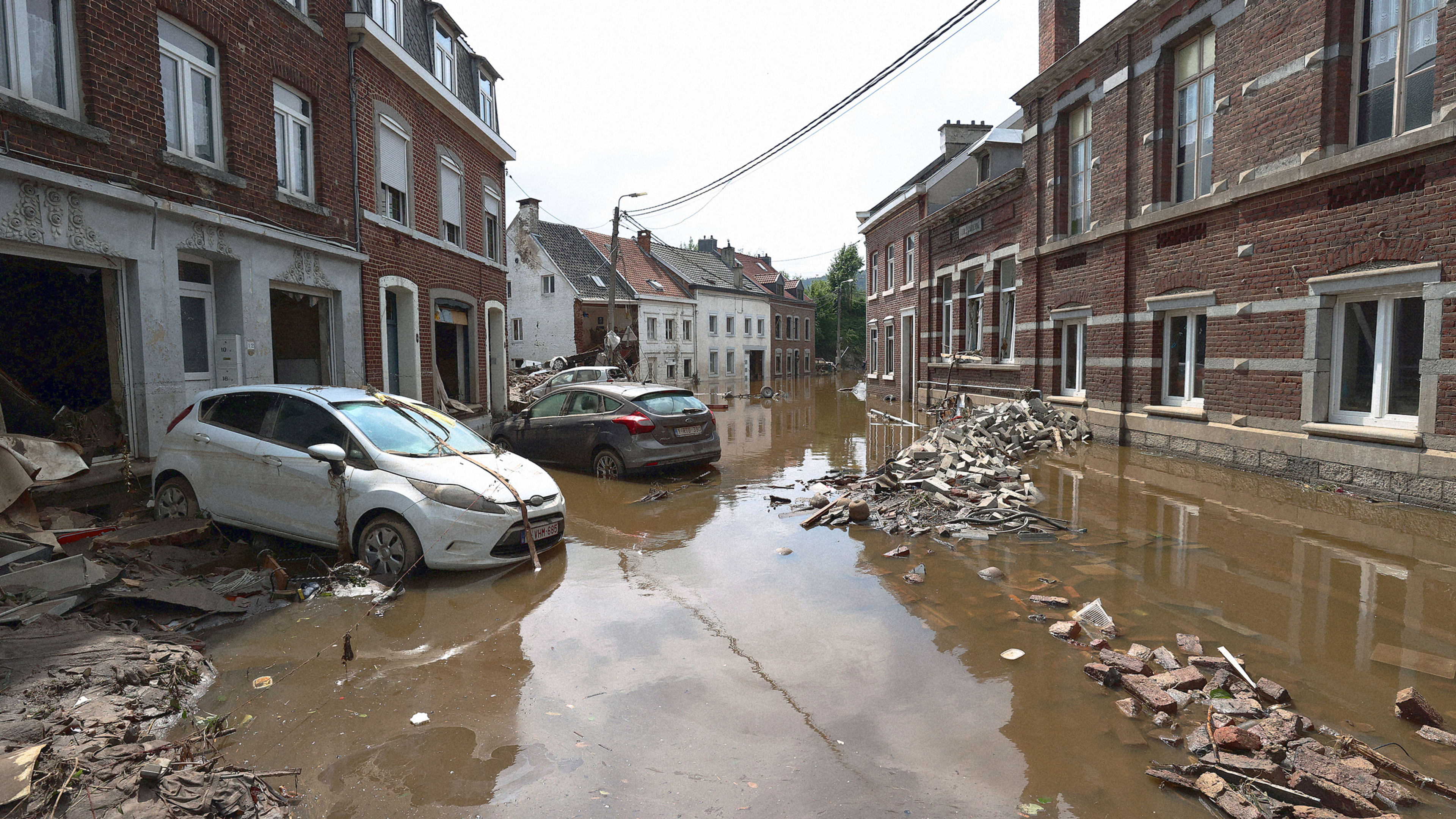In July 2021, Western Europe experienced one of the deadliest floods in its history, killing at least 242 people. Climate change was cited as the main culprit, but according to a recent study, it wasn’t the only thing to blame.
Using a computer model, researchers from the University of Texas at Austin and two universities in China showed that urbanization—and the way cities are designed—can exacerbate rainstorms and influence where the rain falls. We’ve known for a while now that urbanization has devastating consequences on the environment. Asphalt roads absorb and radiate heat. Cars emit heat. So-called urban canyons between tall buildings trap more heat on the street. All of these factors contribute to the “urban heat island” effect, which can make cities hotter than the countryside. But according to the authors of the study, this is the first evidence that urbanization itself can make extreme weather even worse.

“A city by itself doesn’t create the storm,” says Dev Niyogi, a professor in the UT Jackson School of Geosciences and Cockrell School of Engineering, and one of the study’s authors. “But it is important to recognize that the design of a city can have a say in what happens.” In both the simulation and in real life, when warm air rises from the city, it mixes with the cold air in the atmosphere. This leads to a gradient of sorts, where hot and warm temperatures interact, creating “all sorts of instability,” as Niyogi puts it. This creates more energy, which can turn into thunderstorms and heavy rain.

So what can cities do to diminish their impact on weather systems? For Niyogi, it’s all about cooling. Much as it is now inconceivable to sell cars without air-conditioning, he says city planners should develop plans to cool cities down. “When we cool the city, we are reducing the gradient,” he says. “It doesn’t mean an air bubble or a science-fiction dome around the city, it means recognizing that city planning is part of the solution.”
Cities around the world have been developing cooling solutions for decades. In New York City, for example, the NYC CoolRoofs initiative has helped paint more than 10 million square feet of rooftops in a white reflective coating, preventing 2,300 tons of CO2 per year. In Dallas, one program mapped what areas of the city were the hottest and started planting trees on key pedestrian routes. Other solutions involve buildings with automated shades in Abu Dhabi, cool pavements in Los Angeles, and water misters at bus stops in Chongqing, China.
Inevitably, there is no one-size-fits-all solution. “The solution is to cut emissions, and that is needed, but it’s going to take time,” Niyogi says, noting that when prevention isn’t enough, city planners and local authorities should identify what areas are more prone to severe weather (often the suburbs, where the most vulnerable communities live) and put policies in place—like flood mitigation, green infrastructure, and sponge parks—to help weather the storm.
Recognize your brand’s excellence by applying to this year’s Brands That Matter Awards before the early-rate deadline, May 3.
